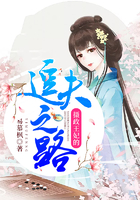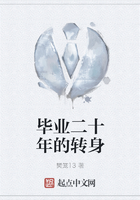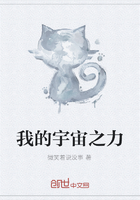What can we know for sure about the life of this man who lived over two millennia over? A mere 400 ambiguous Chinese characters have been set down in the great Chinese historical chronicles written by Si Ma Qian, Ancient China’s most revered master of history, over 2000 years ago. These 400 characters constitute for us the most authoritative and earliest historical clues available to us in our quest to unravel the mysteries of the life and times of the first ancestor of Taoism.
According to the records, the family name of Lao Tzu was not Lao but Li, and his personal name was Er, hence the name Li Er in most modern literature. And in accordance with Chinese naming principles, he also had a further courtesy name, Dan, which in fact means “big ears.” As a sage of Ancient Chinese times, many and varying historical and cultural roles have been imposed on Lao Tzu: firstly, he was the Father of Chinese Philosophy; secondly he was the progenitor of Taoism. His existence for us seems to maddeningly fluctuate between that of a god and of a man. As the chronicles record, he was “like a supernatural dragon with only the head and never the tail can be discerned.”
Can we say with any certainty where Lao Tzu, or Li Er, was born 2,500 years ago? Controversy continues to rage about where in fact can be said to be the home of the great sage. The two most likely contenders would seem to be Qurenli in Ku County of the then Chu State (modern-day Luyi County in Henan Province) and Woyang County, which is less than 200 li away, in modern-day Anhui Province.
In Luyi County, during the Han Dynasty (206 BC-220 AD) a temple honouring Lao Tzu, was constructed, which was centuries later during the Tang Dynasty (618-907) referred to as the Taiqing Palace. The Tang rulers claimed Lao Tzu as a direct descendant of the ruling Tang dynasty. This location has become commonly associated in the popular imagination with Wood carving of the birthplace of the founder of Taoism. Lao Tzu worshipped at Wa’oshan Archaeological surveys jointly sponsored Yuanyang Temple by the State Administration of Cultural of Sichuan. Relics and relevant departments of cultural relics of Henan Province on the palace have been carried out. Although the only visible relics of the site now date from the Qing Dynasty (1616-1911), below ground are to be found the archaeological remains from many different eras and dynasties, including the Tang and the Song. The
archaeological survey revealed a site which had been the scene of sacred offerings by different dynasties stretching back almost 2,000 years which would seem to support the contention that it was indeed a place of great importance and perhaps indeed the birthplace of the great sage.
Over the course of some 1,900 years, three emperors successively come here to offer personal sacrifice to Lao Tzu.
The foundation of the Tang Dynasty (618-907) in the 7th century ushered in the era most closely associated with Lao Tzu and Taoism: the emperor’s father was converted to Taoism one night. Because Lao Tzu and the emperors of the Tang Dynasty shared, the same family name, Lao Tzu himself was incorporated as a direct ancestor of the ruling Li family. The Taiqing Palace of Luyi County was officially recognized as the royal family temple and gained great prestige. It was enlarged on a large scale: each side occupied a length of nearly 10 li (two li equal one kilometer) and there were as many as 600 rooms spread over 40 square li.
In the second year of the reign of Tianbo (743), Li Longji (also known as Tang Xuanzong), the then emperor of the Tang Dynasty, accompanied by his most beloved wife Yang Guifei, even came to Luyi to pay his respects to his ancestor. And to commemorate the long pilgrimage, he had a ceremonial stele erected—The Stele toCommemorateTangXuanzong’s Commentary on the Tao Te Ching.
From that year on, on the 15th day of the second month in the Chinese lunar calendar every year, Taoists, pilgrims, merchants as well as common people from hundreds of kilometres away would gather at the Taiqing Palace Fair of Luyi County performing various memorial activities to pay their respects to Lao Tzu. Such customs have lasted over a thousand years. The local people are immensely proud of their eminent ancestor. They think peace and happiness will come their way given his influence in the Heavens. Invariably locals set a sculpture of Lao Tzu in the center of their main room or hang a picture of him on the wall.
Pei Xianwen, a resident of Luyi, is famous for the sculptures of Lao Tzu that he produces. Every tourist season, many people commission Lao Tzu sculptures from him. Since the Taiqing Palace has come to be acknowledged as the physical and spiritual homeland of Lao Tzu, it is naturally believed that a statue of the master in his home place has much greater value than one produced elsewhere. Indeed for many Taoists, a statue from any other place simply will not do. Pei Xianwen is certainly not complaining.
Then, what did Lao Tzu himself look like 2500 years ago on Earth? People of today can only imagine and conjecture his appearance by the description of artists. But how the image of Lao Tzu in paintings was handed down?
In Chinese eyes, Lao Tzu is first and foremost an ancient philosopher of unrivalled insight and wisdom; in the eyes of the adherents of Taoism, Lao Tzu is seen as an individual intrinsically associated with Nature; as someone who succeeded in eliminating desire; and in the eyes of many common people, he is a man with white eyebrows, white hair, and white beard. The most remarkable bodily feature noted by people is a “nose like two pillars, ears down to the shoulders and arms which can extend to the knees.”















